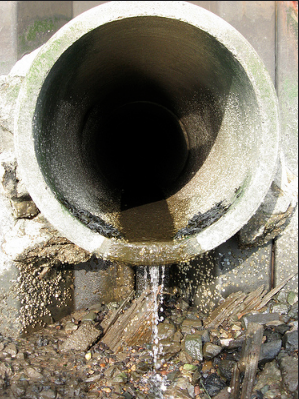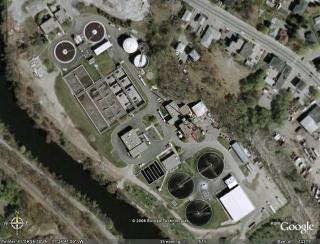RI Sewage Treatment Facility Operator Could Be Fined $25,000 a Day for Ongoing Releases
Saturday, June 11, 2022
The operator of the Woonsocket sewage treatment facility continues to release improperly treated waste into the Blackstone River, according to Rhode Island environmental officials.
For the second time in a week, Rhode Island Department of Environmental Management (DEM) officials have issued a notice to the public warning of the dangers of the improperly treated waste.
“The no-contact advisory on the Blackstone River that the Department of Environmental Management (DEM) announced June 5 because of partly treated wastewater being discharged by the Woonsocket Regional Wastewater Treatment Facility will continue as the plant’s operators correct ongoing unpermitted discharges,” said DEM Friday.
GET THE LATEST BREAKING NEWS HERE -- SIGN UP FOR GOLOCAL FREE DAILY EBLASTThe improperly treated waste is subject to a series of environmental fines — including $25,000 per occurrence and the cost of the investigation. Penalties for the ongoing discharge — creating a potential threat to the environment and public health — could rise to hundreds of thousands of dollars.
The treatment facility is owned by the City of Woonsocket, which contracts the operations and maintenance of the plant to Jacobs, a Texas-based consulting and engineering firm, and related sludge treatment systems to Synagro Technologies Inc. headquartered in Baltimore.
RI statute states, “Any person who shall violate the provisions of this chapter, or of any permit, rule, regulation, or order issued pursuant thereto, shall be subject to a civil penalty of not more than twenty-five thousand dollars ($25,000) for each day during which the violation occurs. In an action for enforcement brought in the superior court…”
“The court also may order any person to pay to the director any and all costs incurred in the investigation, cleanup, and restoration of areas affected by pollutants in connection with any violation. Nothing herein contained shall be construed to limit the amount of monetary relief which the court can award in any action brought pursuant to any other provision of the general laws or pursuant to common law,” states Rhode Island law.
Warning Issued
As a precaution, DEM advises that residents temporarily refrain from both primary contact recreational water activities (such as wading and swimming) and secondary contact activities (such as canoeing, kayaking, rowing, and fishing) and to avoid consuming any fish from the Blackstone River and any waters that receive flow from the Blackstone River, including but not limited to the Blackstone Canal and Scott Pond, from the location of the discharge, at 11 Cumberland Hill Road in Woonsocket, to the Slater Mill Dam in Pawtucket (see map above). This advisory is in effect until further notice.
As the state regulator of wastewater treatment facilities, DEM continues to investigate the causes of the discharges. DEM’s inspection team has been on site daily investigating process and equipment failures that may have resulted in the loss of full treatment, as well as to observe the steps being taken by the city and its vendors to ensure a return to permit compliance. DEM issued letters of noncompliance to the facility in November 2021 and March 2022 regarding operations and maintenance concerns.
The facility treats between six and eight million gallons of sewage from Woonsocket and nearby areas daily. Sewage from city residents as well as its commercial and industrial establishments is continually collected and conveyed underground to the treatment facility, which removes pollutants in accordance with its state discharge permit before that water can discharged to the Blackstone River.
According to DEM, the agency has instructed plant personnel to continuing to take samples upstream and downstream of the plant outfall for analysis. After the June 5 no-contact advisory went into effect, a DEM crew collected water samples at a series of 20 locations in the estuarine portion of the Providence and Seekonk Rivers from just below Slater Dam south to Conimicut Point.
Analysis of these samples indicated that fecal coliform bacteria levels in the Seekonk River were not elevated and that the discharge was not adversely affecting the water quality of shellfish grounds in the lower Providence River and Upper Narragansett Bay.
Lower Providence River E conditional shellfish area is closed from 12 PM on June 4 to PM on June 16 due to rain, which DEM says is a routine rain closure.
Related Articles
- NEW Kilmartin Faults Massachusetts DEP for Blackstone Sewage
- EPA Charges Johnston With Discharging Untreated Sewage into Rivers, Wetlands
- RI DEM Announces Grant Availability to Help Boaters Dispose of Sewage
- Partly Treated Sewage Discharged Into Blackstone River, Says RI DEM
- New Fish Kill Concerns in Providence’s Seekonk River
- Beach Closures Trending Downward in RI’s Narragansett Bay, Says EcoRI’s Carini
- Why Bonnet Shores, Third Beach, and More Have Faced Recent Beach Closures in RI, on LIVE
- Rhode Island on Pace to Have Most Beach Closures in Past Ten Years




